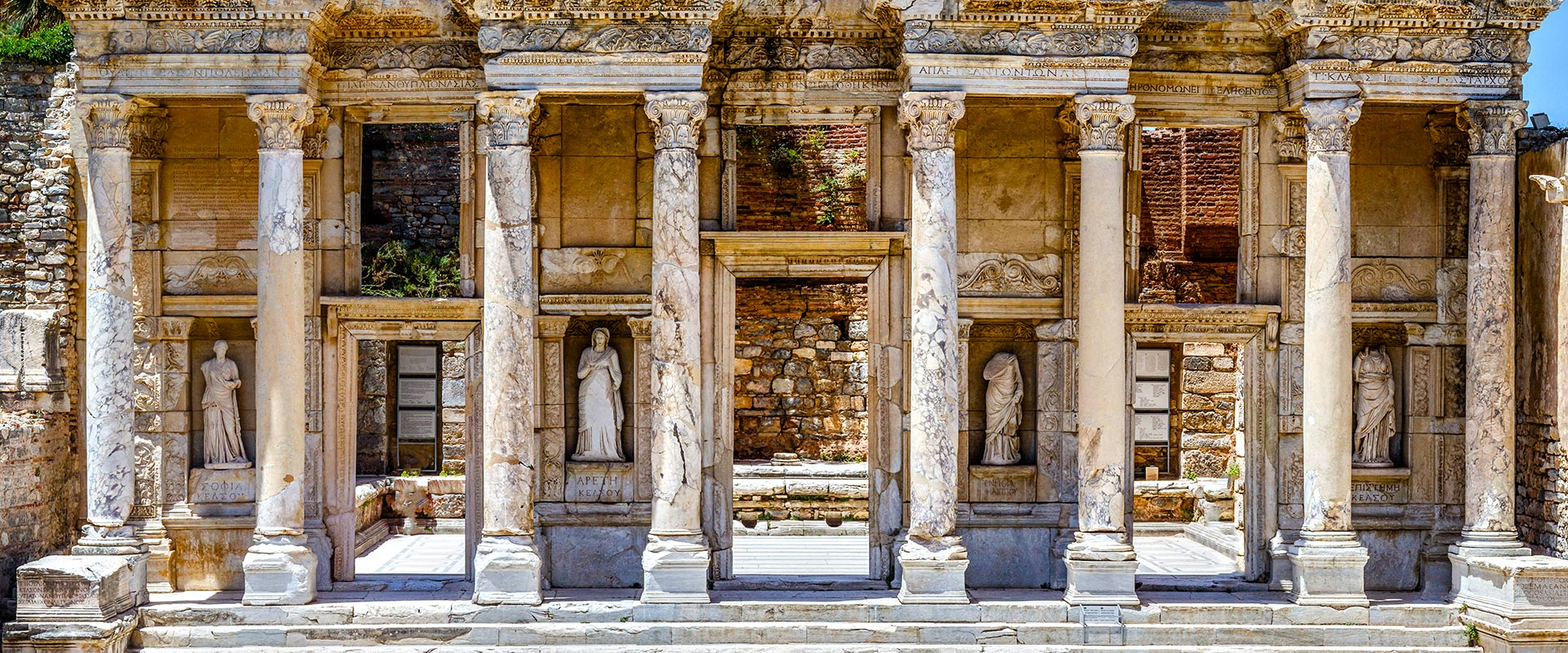About the Resources
The purpose of the Resources section is to help the student and the interested reader find the source material on which the content on this site is based. The sources are grouped by category: books, articles, websites, and multimedia. They are in alphabetical order within each grouping. Each source is annotated, that is, briefly described. More extended discussions, of ancient texts such as Livy’s History of Rome, for example, can be found in the Topics section.
About this Graphic
The Library of Celsus
The Library of Celsus was built by Gaius Julius Aquila for his father Tiberius Julius Celsus Polemaeanus, the first ethnic Greek to become a Roman Consul and the governor of the province of Asia. He was wealthy and a locally prominent person. The building was unusual because it also doubled as a tomb for Celsus and it was located within the city walls of Ephesus. This was highly unusual and speaks to the prominence of Celsus because tombs were normally located outside the city walls.
The library was built in typical Greek style, column and lintel construction and wholly of marble, between 117 and 120 AD. It may be characterized stylistically as the “Baroque” Greek style. That is, alternating projected and recessed column-lintel combinations that gave the facade a feeling of movement. Also, the building was highly decorated with almost every surface bearing some sort of design.
The first floor consisted of three doorways, one central door flanked by two smaller ones. Above each door was a window. There were four projected column-lintel combinations. The projecting columns framed a recessed wall with niches containing statues personifying Sophia (wisdom), Episteme (knowledge), Ennoia (intelligence) and Arete (valor). The capitals of the columns were composite, with ionic scrolls bracketing an egg and dart design resting on a Corinthian acanthus representation. The capitals supported a pediment with a frieze showing a Roman eagle framed below and above by an egg and dart design and separated above that by a dental border above which was a complex floral pattern.
The marble of the column barrel itself was exquisite; white with heavy grey-to-brown veining. The marble was probably local and was available in large quantities.
The second floor repeated the undulating pattern of the first.
The scrolls of the manuscripts were kept in niches on the walls. There were double walls behind the bookcases to prevent them from the extremes of temperature and humidity. The capacity of the library was more than 12,000 scrolls. It was the third richest library in ancient times after those of Alexandra and Pergamum.
Tragically, the library was destroyed by an earthquake in 262 AD leaving only the façade intact. The façade was destroyed in another earthquake in the middle ages. It was reconstructed in the 1970s by the Vienna Archeological Society.

